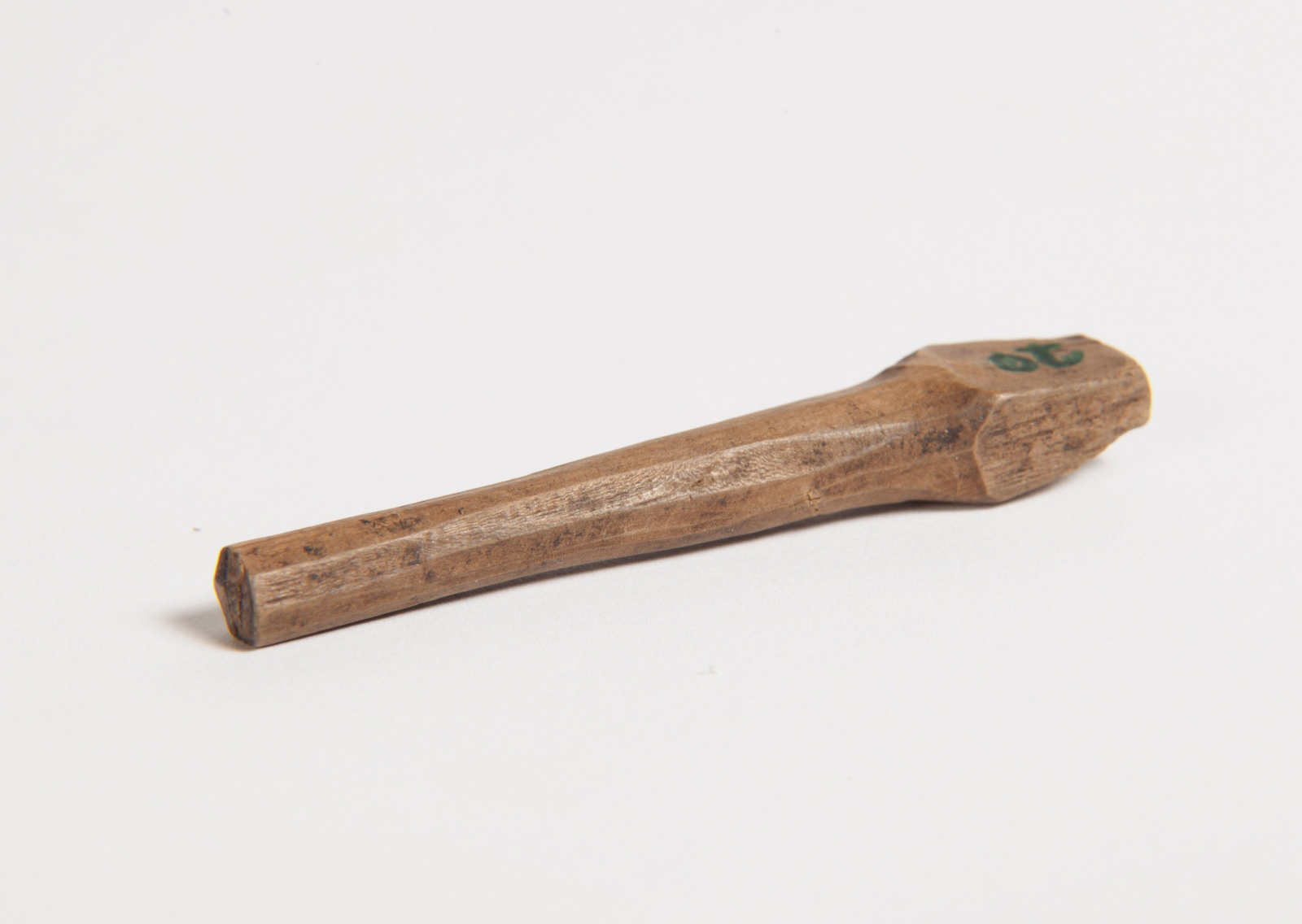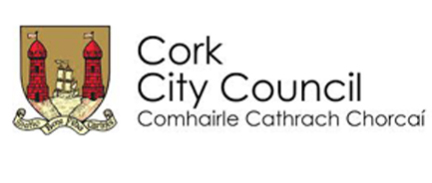In the 12th century, Gerald of Wales wrote the Topography of Ireland, an outsider’s account of the land and its people. In this work he commented on the musicians of the island, whose compositional skills and distinct melodies were of great standing. The virtuosos, who impressed Gerald with their fast playing may have been unique to Ireland, however continental cultures also impacted on music in Ireland following the coming of the Normans. The artefacts held in Cork Public Museum, found at the South Main Street site, are an important witness to musical traditions at a time that had no audio recordings. These artefacts allow us to gain a better understanding of human artistic expression. Music is played every day all around us, and by understanding the time, place, and people behind the music of medieval Ireland, we can more fully relate to the Irish past.

The first items, that resemble drum beaters, are tuning pegs for stringed instruments. Two sets of tuning pegs are held in the Museum, both of which were very likely to be for psaltery instruments. Dating to the 12th and 13th century respectively, we can assume, the two pegs belonged to either a lute (resembling a modern guitar) or a fiddle. These were unlikely to be for a lyre, as these instruments had fallen out of fashion by the 12th century. However, the Irish were known to have an instrument similar to a lyre and called a timpan, which was plucked when played. These pegs may seem like simple objects to produce, yet precision was important when keeping instruments in tune. Unlike modern instruments, medieval pegs were used with a tuning wrench, as suggested by marks at the top of the pegs.
We can assume that these artefacts were part of an instrument that was played at taverns, markets, or public events. The lute or fiddle did not have as high a standing as the harp. This standing is comparable to the position of the nomadic jongleur of Europe, who was regarded as a rank below the court minstrel, a well-esteemed musician who performed for nobility. In the instance of the items found at the Christ’s Church site in Cork, it is believed that these instruments belonged to a crossan, who was a travelling entertainer or musician. Harpers of the early medieval period were regarded as being of a higher ranking than other musicians in Gaelic society, usually serving under a chieftain. According to the Brehon Laws, these Irish string players, called cruitire, often received compensation for any harm done unto them and players whose fingernails had been damaged sometimes received payment and a ‘wing nail’ was provided to allow them to play.
The Anglo-Norman invasion, backed by Pope Adrian IV, greatly transformed Irish society, and caused the Brehon Laws to decline. The Pope sought to further bring the Church in Ireland under the influence of Rome. With these changes, music became exclusive to religious practices, a process similar to that experienced by Anglo-Saxon music. This change caused a split between liturgical and secular music, with the harp becoming an ecclesiastical instrument.
At the same site, a late 12th to early 13th century bridge belonging to either a fiddle or a lute, was found. This bridge is an anvil-shaped device that was used to support the strings and allow them to vibrate and was usually located at the plucking or bowing end of an instrument. In this case, the bridge was designed to accommodate seven strings and is made from bone material. There is some ambiguity between the parts of fiddles, lutes, and even timpan instruments. The timpan was plucked before the 12th century, and later was played with a bow.
There is an abundance of sources, both textual and visual, that suggest the use of six- to eight-string instruments during devotional practices. Gerald of Wales mentioned in the Topography that holy men carried instruments and found ‘pious delight’ while playing them. It is probable that this bone bridge was part of an instrument used in religious services - one that accompanied liturgical services and provided a medieval equivalent to a ‘backing track’ in one of the churches in Cork City, possibly in Christ’s Church itself.
Cork Public Museum also houses a selection of medieval wind instruments that were common across early medieval Europe. These artefacts are made from the long ulna bones of large birds, typically swans or geese. While dating of these specific items is difficult, it can be assumed that they were from the same period as the tuning pegs found at Christ’s Church. The bone whistle is a primitive instrument, a basic woodwind instrument that contains a D-shaped hole for the voicing of the notes, and between two to six holes for the fingers of a player. This early design resembled a modern-day tin whistle. Known as a buinne or fedan in Ireland, this instrument type can go back as early as the 9th century. The artefacts on display are either damaged or represent the pieces that were not fit for use and discarded.
We can associate these whistles with a travelling musician, who likely carried a bone flute as it required little to no maintenance, unlike harps or lutes. As the Anglo-Norman invaders also used a similar instrument, it is not exclusive to Ireland. However, texts reveal that the Irish approach to music relied heavily on improvisation and skill over knowledge of any tunes. Yet, with the increasing importance of music in the liturgy, these instruments sometimes accompanied choir signing after the 13th century. It is possible that these whistles were used in Christ’s Church during liturgy, but they could have also been played on South Main Street, which was a hub of activity in Cork at the time.
Another instrument found with the music items is the so-called ‘buzz bone’, which was possibly a children’s toy; it consisted of the metapodial bone of a pig with a string threaded through its hole. When the thread was pulled, it created a buzzing noise. Although this small object was not a professional instrument, it certainly was a pleasing object from the medieval world.
Further Reading:
Grattan Flood, W.H., A History of Irish Music, Browne and Nolan Limited, 1913.
Williams, J.E., The Court Poet in Medieval Ireland, Proceedings of the British Academy, 1971.
This special online exhibition has been compiled by
Emmanuel Alden, BA in History from Kutztown University, Pennsylvania. He is presently an MA student in Medieval History, University College Cork.
David O’Mahony, BA in History & Geography from University College Cork. He is presently an MA student in Medieval History, University College Cork.
All images by Dara McGrath for Cork Public Museum
This online exhibition has been compiled as an online version of the exhibition that is on display in the permanent gallery of Cork Public Museum
Acknowledgments
This project is funded by Fáilte Ireland, Ireland’s Ancient East and Cork City Council.
![]()
 .
. 